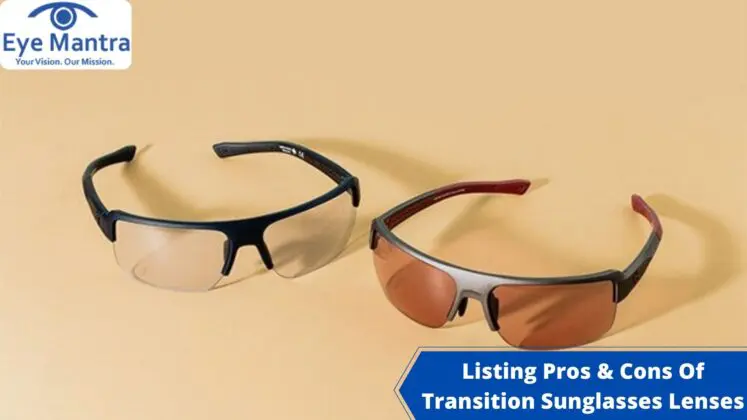
Contents
Transition sunglasses lenses or photochromic lenses can be defined as the lenses that darken when exposed to sunlight and lighten up in softer light or darker light. These lenses have been in the market for a decade or more, and they provide the convenience of sunglasses without even wearing them over prescription glasses or having to consistently switch between the two. But the question is – is it really as good as it seems? Is it worth switching to?
They are also referred to as photochromic lenses. These lenses look like regular lenses when you are indoor but they automatically darken when moving into a brighter area. Molecules in the photochromic lenses are affected by the ultraviolet rays so they change their color. They will automatically darken in the light even when it is an overcast day as UV rays still infiltrate clouds.
This offers you the best possible vision throughout all lighting through various shades of tint, without you even worrying about it. Because Transitions is the most well-known brand of photochromic lenses, these kinds of glasses are frequently referred to as ‘transition lenses’. They are also sometimes referred to as adaptive lenses, auto-tinted lenses, or variable-tint lenses. Transition lenses must not be confused with polarized glasses (sunglasses). Polarized glasses have a set tint that prevents glare, however, they are not changeable. They are able to adapt to light in the same way photochromic lenses do.
Regular sunglasses are able to block out specific wavelengths of light with either colored filters or polarization. The molecules of photochromic lenses react to UV as they are carbon-based. They alter the shape and absorb the light. In other words, the lenses start to look darker. The more the number of UV rays, the darker the lenses would become. Depending on the levels of UV, these lenses adapt accordingly to different darker shades. The darkening of the lenses can last up to 30 seconds for the tint to take effect on the glasses. It may take between 2 to 5 minutes to get back to normal when coming back indoors.
They are helpful in your general eye health as they protect you from UV rays. Produced from either polycarbonate, plastic, or glass, photochromic/ transition lenses are easily available as various prescription glasses for people who have vision difficulties. Plastic photochromic lenses are often picked over the glass as their molecules make up; customers often find the tint on plastic lenses to be more evenly distributed than on photochromic glass lenses.
The advantages of having transitional sunglasses lenses may seem obvious, but not all of them are obvious. Following are some of the biggest pros to getting a pair of transitional lenses:
Here are listed some of the drawbacks of transition sunglasses lenses:
Transition lenses can be worn all day regularly, just like regular glasses. Anyone can benefit from them, but specifically, those who daily interchange from indoors to outdoors.
Photochromic glasses can specifically prove to be a better choice for children who are unlikely to juggle two different pairs of glasses – regular and sunglasses. It also helps their eye health from an early age by protecting them from the sun and UV rays.
The best way to treat your eyes is to visit your eye care professional and get your eyes checked regularly. He will be able to assess the best method of treatment for your eye ailment.
Visit our website Eyemantra.
To book an appointment call +91-9711115191. Or mail us at eyemantra1@gmail.com.
Our other services include Retina Surgery, Specs Removal, Cataract Surgery, and many more.